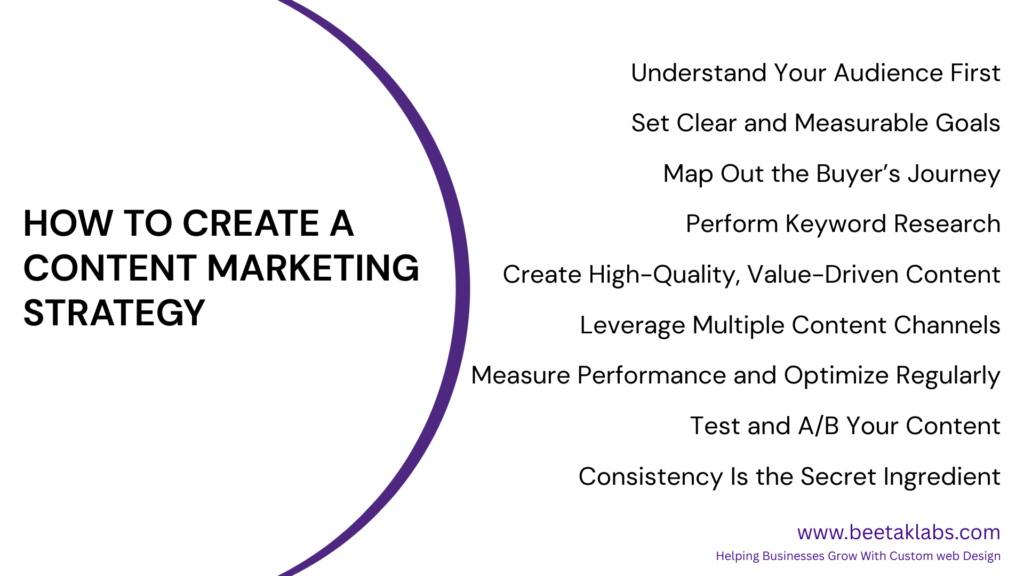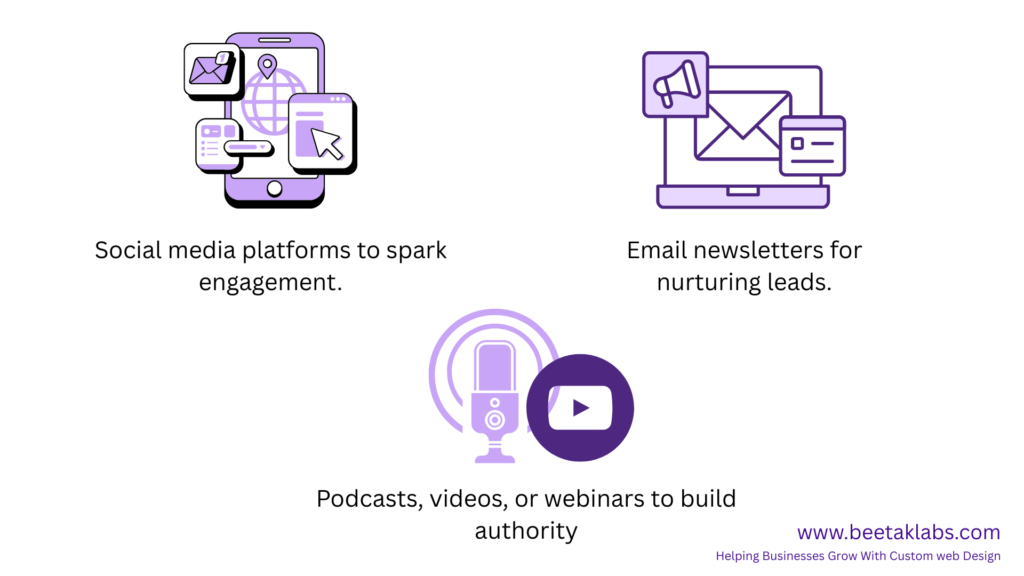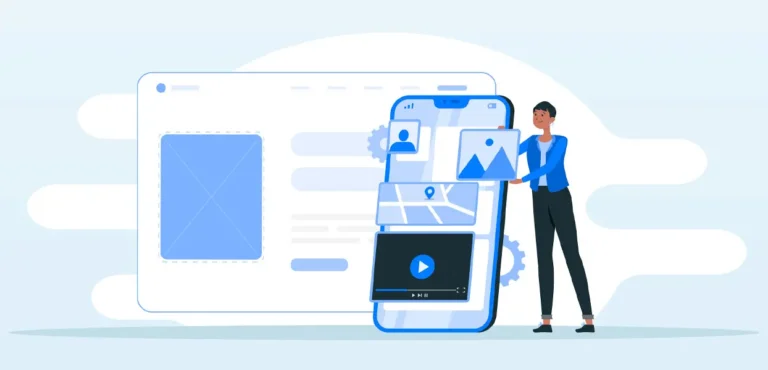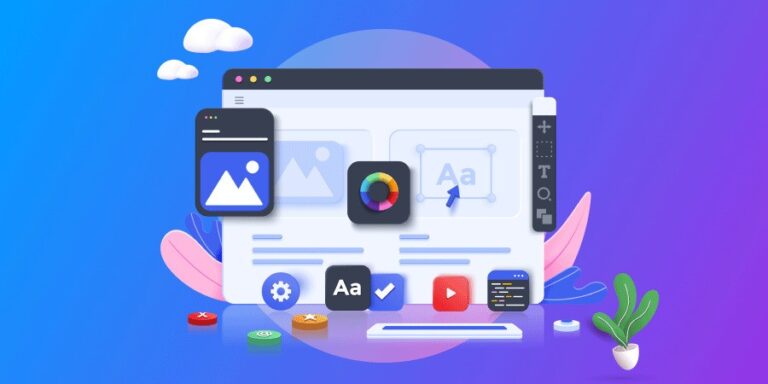Introduction
In the digital world, content is more than just words—it’s your most powerful sales tool. While many businesses create content, not all of them turn that content into real, measurable results. That’s where a strong content marketing strategy comes in.
To drive leads, sales, and long-term customer loyalty, your content must be purposeful, targeted, and conversion-driven. This guide will walk you through the essential steps to create a content marketing strategy that not only builds brand awareness but also increases your conversions.

Understand Your Audience First
Before writing a single word, you need to know who you’re writing for. Understanding your audience’s pain points, goals, behavior, and buying journey is the foundation of a successful strategy.
Start by creating detailed buyer personas. These personas should include demographics, motivations, common objections, and preferred content formats (blogs, videos, social posts, etc.). The more detailed your persona, the easier it becomes to craft tailored content that drives action.
Set Clear and Measurable Goals
What do you want your content to achieve? Whether it’s generating leads, boosting product sales, increasing email subscribers, or improving engagement, every content piece should have a defined purpose.
Use SMART goals—Specific, Measurable, Achievable, Relevant, and Time-bound. For example: “Increase email newsletter sign-ups by 30% in 3 months through lead magnets and blog content.”
Map Out the Buyer’s Journey
To truly convert, your content must align with each stage of the buyer’s journey:
- Awareness Stage – Focus on educational content (e.g., blog posts, infographics, social media) to introduce your brand and solve problems.
- Consideration Stage – Use comparison guides, case studies, and webinars to show how your solutions work.
- Decision Stage – Include testimonials, product demos, and free trials to build trust and encourage conversions.
By mapping content to each stage, you keep prospects moving smoothly down the funnel.
Perform Keyword Research
Great content is useless if no one sees it. That’s why SEO is critical in your content marketing strategy.
Use tools like Ahrefs, SEMrush, or Google Keyword Planner to find:
- High-search volume, low-competition keywords.
- Long-tail keywords with clear intent.
- Questions people ask (from tools like AnswerThePublic or Google’s People Also Ask).
These keywords should guide your content topics and structure, helping you rank higher and attract the right audience organically.
Create High-Quality, Value-Driven Content
It’s not about quantity—it’s about quality. Every content piece should educate, inspire, or solve a problem for your audience.
To make your content more conversion-focused:
- Use compelling headlines and emotional hooks.
- Include strong CTAs (calls to action) like “Download Now,” “Subscribe,” or “Get Your Free Trial.”
- Add visuals, infographics, and videos to make content engaging.
- Optimize for readability with short paragraphs, subheadings, and bullet points when needed.
Leverage Multiple Content Channels
Don’t just post blogs and hope for results. Share your content across different marketing channels to amplify its reach and impact.

Each channel offers a unique way to connect with potential customers and increase conversion opportunities.
Measure Performance and Optimize Regularly
Once your strategy is live, it’s crucial to track results and optimize. Tools like Google Analytics, Hotjar, and HubSpot can help you monitor:
- Traffic sources
- Conversion rates
- Bounce rate
- Time on page
- Content that performs best
Use this data to refine your approach—keep what’s working, and improve or eliminate what’s not.
Test and A/B Your Content
Sometimes small tweaks make a big difference. A/B testing helps you find out what drives better results.
Test variations of:
- Headlines
- CTA buttons
- Landing page copy
- Email subject lines
Over time, A/B testing lets you fine-tune your strategy for maximum conversions.
Consistency Is the Secret Ingredient
A successful content strategy doesn’t happen overnight. To build trust and keep users coming back, you need to post content consistently.
Create a content calendar to plan and stay on track. It helps balance types of content, channels, and formats—and ensures you’re never scrambling for ideas.
Final Thoughts
Creating a content marketing strategy that boosts conversions is all about being intentional, insightful, and audience-driven. When you combine SEO, valuable content, smart targeting, and conversion tactics, your content becomes a growth engine for your business.
To learn more about content marketing and website strategies, check out these related posts:



